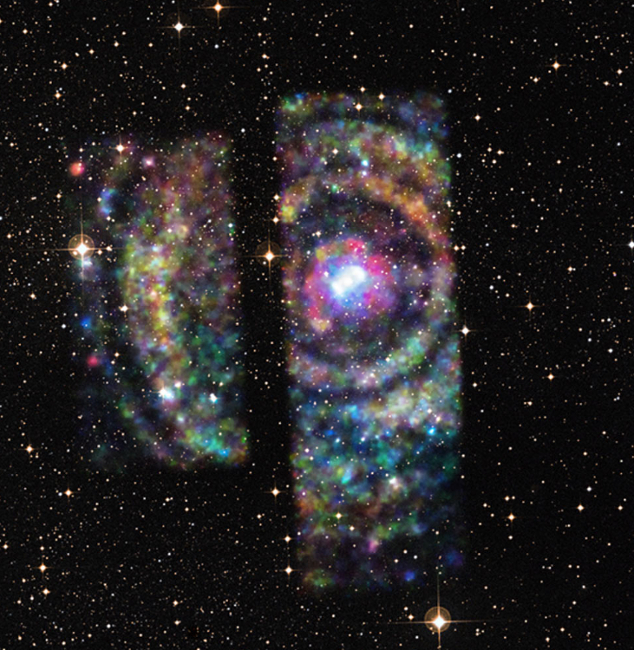
 Credit: X-ray: NASA/CXC/University of Wisconsin-Madison /S. Heinz et al.; Optical: DSS
Credit: X-ray: NASA/CXC/University of Wisconsin-Madison /S. Heinz et al.; Optical: DSS
Four Ring Circus of Circinus X-1
In 2013, the neutron star X-ray binary Circinus X-1 produced a powerful X-ray flare. X-ray binaries are composed of neutron stars (collapsed cores of stars that are about as dense as an atomic nucleus) in orbit around a normal star. Gas is pulled off the normal star and accreted by the neutron star, producing high energy X-ray emission. Cir X-1 is the youngest known X-ray binary, created in a fiery stellar explosion about 5000 years ago (as seen from earth). Cir X-1 is also a very erratic X-ray binary, showing bright outbursts at times, while at other times showing little X-ray emission. The 2013 flare was detected by the Monitor of All-Sky X-ray Image (MAXI) instrument on the International Space Station. Followup observations by the Chandra X-ray Observatory and by XMM-Newton showed portions of four X-ray rings centered on Cir X-1. These X-ray rings are shown in the false color X-ray image above, which is superimposed on an optical image of the sky around Cir X-1: red represents low energy X-rays, green medium energy X-rays, and blue high-energy X-rays. Astronomers realized that these rings are actually echoes of the 2013 X-ray flare produced by discrete clouds of dust between Cir X-1 and earth. Careful analysis of these X-ray "light echoes" allowed astronomers to determine the spatial distribution of these clouds and to resolve the uncertainty of the distance to Cir X-1.
Published: April 18, 2016
<
HEA Dictionary ● Archive
● Search HEAPOW
● Other Languages
● HEAPOW on Facebook
● Download all Images
● Education ● HEAD
>

Each week the HEASARC
brings you new, exciting and beautiful images from X-ray and Gamma ray
astronomy. Check back each week and be sure to check out the HEAPOW archive!
Page Author: Dr. Michael F. Corcoran
Last modified Monday, 26-Feb-2024 17:20:54 EST


